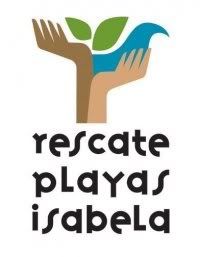

WHAT WE ARE LOOKING FOR, AND WHY
The BWTF program is designed to detect the presence of enterococcus bacteria, in particular e. faecalis and e. faecium. These are commensal bacteria in the mammalian intestinal tract, meaning that although humans are not born with them they do quickly colonize the human gut during the neonatal months and in healthy individuals soon achieve their part of balanced intestinal ecology. In return for us providing a warm, wet, and reasonably safe place for them to reproduce they assist in the further breakdown of proteins passed on by the stomach so that we can absorb more nutrition from food than otherwise. These bacteria are so important in this secondary digestive phase that they are sometime included as an ingredient in probiotic supplements given to those patients whose intestinal ecology has been severely unbalanced or destroyed by extreme antibiotic treatments or chemotherapy. In a healthy individual about half of the dry weight of human feces is actually bacteria, largely enterococcus.
This of course causes problems if fecal matter is not disposed of properly. Returned to the ground these bacteria quickly are ingested by other bacteriophagic organisms resident in the soil, and rendered harmless. Released into water they can rapidly become a significant problem due to several characteristics of this genus of bacteria: they are facultively anaerobic, meaning they can survive and reproduce in environments that either contain oxygen or not; they are very tolerant of high levels of dissolved salt, and can survive and reproduce in water far more salty than typical sea water; they remain viable during prolonged dessication, and under laboratory conditions can survive and reproduce after 60 days of being completely dry. All this means that once released into fresh or saltwater environments they easily reproduce as long as food is available, and the only other natural controls to their growth are predatory bacteriophages or UV radiation in sunlight. More worrisome is a characteristic shared by all bacteria, which although they reproduce by ‘cloning’ or dividing into two with complete and identical sets of DNA each, they are also able to ‘horizontally transfer’ chromosome sets within the species. This lateral DNA transference is how bacteria evolve to survive new environmental challenges. The flu ‘bug’ continues to survive the best medical treatments because sometime, somewhere, one of the bacterium mutate sufficiently to tolerate whatever new drug is being administered, and passes the DNA of that survival trait on to others of that genus. A certain drug resistance was recently traced thru hospitals and tracked- it took 6 months for the trait to get passed on completely around the planet.
With regards to enterococcus this ability for lateral transference is particularly alarming since it is a common target of antibiotic treatments and has developed a tolerance for a wide spectrum of treatment drugs. Certain particularly virulent strains have multiple resistance, and their infections are extremely difficult and expensive to treat. There is no good reason to assume these strains of bacteria are not being released into our coastal waters by faulty sewage treatment practices, nor that this resistance characteristic is not going to be passed on to other strains of enterococci. That is why the legally ‘safe’ limits for these bacteria are very low- 35 viable bacteria per 100 ml of water in Puerto Rico, only 7 per 100 ml in Hawaii. The federal limit is 104 per 100 ml, although this will likely change as new legislation is enacted.
What are the medical problems associated with water borne fecal bacterial contamination? This depends of course on how healthy you are, and where the infection starts. A healthy person’s immune system is generally capable of dealing with minor quantities of ingested enterococcus, but if these defenses are overwhelmed then a wide variety of gastro-intestinal symptoms are likely. The real problem starts if the bacteria get into your mucous membranes via eyes or ears, or subcutaneous tissue and/or bloodstream via cuts, scratches or open wounds. Membrane infections can range from mild pink-eye to urinary tract infections to fatal meningitis. Tissue infections can range from surface impetigo to necrotic decay of deeper layers. In the bloodstream a wide range of bactericemic symptoms can develop, most notably of heart tissue. The ‘at risk’ group for these more severe illnesses are the very young, the elderly, those using immunosuppressant drugs, and those already suffering some type of systemic infection or otherwise with a compromised immune system. These people are far more susceptible to health problems at much lower levels of exposure to bacteria.
Given all that, how to you know the water is safe to swim in? Basically, you don’t. You cannot see or smell the presence of enterococcus at unsafe levels. The only way to know what the bacteria count is, is to test the water
To repeat: Here in Rincón our coastal waters are usually very clean, about 60% of the time no matter what season. About 10% of the time they are not, dangerously so, and this is not strictly dependent on rainfall. Whether this risk factor is enough to mobilize the community in supporting a regular water testing program remains to be seen.
For more information, or to volunteer to assist with this program, please contact Steve at stevetamar@gmail.com
The BWTF program is designed to detect the presence of enterococcus bacteria, in particular e. faecalis and e. faecium. These are commensal bacteria in the mammalian intestinal tract, meaning that although humans are not born with them they do quickly colonize the human gut during the neonatal months and in healthy individuals soon achieve their part of balanced intestinal ecology. In return for us providing a warm, wet, and reasonably safe place for them to reproduce they assist in the further breakdown of proteins passed on by the stomach so that we can absorb more nutrition from food than otherwise. These bacteria are so important in this secondary digestive phase that they are sometime included as an ingredient in probiotic supplements given to those patients whose intestinal ecology has been severely unbalanced or destroyed by extreme antibiotic treatments or chemotherapy. In a healthy individual about half of the dry weight of human feces is actually bacteria, largely enterococcus.
This of course causes problems if fecal matter is not disposed of properly. Returned to the ground these bacteria quickly are ingested by other bacteriophagic organisms resident in the soil, and rendered harmless. Released into water they can rapidly become a significant problem due to several characteristics of this genus of bacteria: they are facultively anaerobic, meaning they can survive and reproduce in environments that either contain oxygen or not; they are very tolerant of high levels of dissolved salt, and can survive and reproduce in water far more salty than typical sea water; they remain viable during prolonged dessication, and under laboratory conditions can survive and reproduce after 60 days of being completely dry. All this means that once released into fresh or saltwater environments they easily reproduce as long as food is available, and the only other natural controls to their growth are predatory bacteriophages or UV radiation in sunlight. More worrisome is a characteristic shared by all bacteria, which although they reproduce by ‘cloning’ or dividing into two with complete and identical sets of DNA each, they are also able to ‘horizontally transfer’ chromosome sets within the species. This lateral DNA transference is how bacteria evolve to survive new environmental challenges. The flu ‘bug’ continues to survive the best medical treatments because sometime, somewhere, one of the bacterium mutate sufficiently to tolerate whatever new drug is being administered, and passes the DNA of that survival trait on to others of that genus. A certain drug resistance was recently traced thru hospitals and tracked- it took 6 months for the trait to get passed on completely around the planet.
With regards to enterococcus this ability for lateral transference is particularly alarming since it is a common target of antibiotic treatments and has developed a tolerance for a wide spectrum of treatment drugs. Certain particularly virulent strains have multiple resistance, and their infections are extremely difficult and expensive to treat. There is no good reason to assume these strains of bacteria are not being released into our coastal waters by faulty sewage treatment practices, nor that this resistance characteristic is not going to be passed on to other strains of enterococci. That is why the legally ‘safe’ limits for these bacteria are very low- 35 viable bacteria per 100 ml of water in Puerto Rico, only 7 per 100 ml in Hawaii. The federal limit is 104 per 100 ml, although this will likely change as new legislation is enacted.
What are the medical problems associated with water borne fecal bacterial contamination? This depends of course on how healthy you are, and where the infection starts. A healthy person’s immune system is generally capable of dealing with minor quantities of ingested enterococcus, but if these defenses are overwhelmed then a wide variety of gastro-intestinal symptoms are likely. The real problem starts if the bacteria get into your mucous membranes via eyes or ears, or subcutaneous tissue and/or bloodstream via cuts, scratches or open wounds. Membrane infections can range from mild pink-eye to urinary tract infections to fatal meningitis. Tissue infections can range from surface impetigo to necrotic decay of deeper layers. In the bloodstream a wide range of bactericemic symptoms can develop, most notably of heart tissue. The ‘at risk’ group for these more severe illnesses are the very young, the elderly, those using immunosuppressant drugs, and those already suffering some type of systemic infection or otherwise with a compromised immune system. These people are far more susceptible to health problems at much lower levels of exposure to bacteria.
Given all that, how to you know the water is safe to swim in? Basically, you don’t. You cannot see or smell the presence of enterococcus at unsafe levels. The only way to know what the bacteria count is, is to test the water
To repeat: Here in Rincón our coastal waters are usually very clean, about 60% of the time no matter what season. About 10% of the time they are not, dangerously so, and this is not strictly dependent on rainfall. Whether this risk factor is enough to mobilize the community in supporting a regular water testing program remains to be seen.
For more information, or to volunteer to assist with this program, please contact Steve at stevetamar@gmail.com





Great work Steve!
ReplyDelete